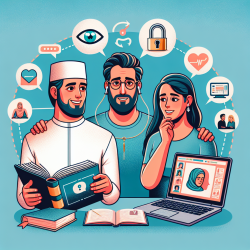Aphasia is a communication disorder that significantly impacts the lives of individuals and their loved ones. The Aphasia Couples Therapy (ACT) Workbook, authored by Larry Boles, PhD, offers a data-driven approach to enhancing communication between people with aphasia and their significant others. This blog will discuss the research findings presented in the ACT Workbook and provide actionable insights for practitioners aiming to improve their skills and outcomes for their clients.
Understanding Aphasia Couples Therapy (ACT)
ACT is a hybrid therapeutic approach combining elements from various conversational training programs such as:
- Conversation Coaching
- Supported Conversation for Adults with Aphasia
- Communication Partners
- Authentic Social Perspective
The primary goal of ACT is to enhance the communicative effectiveness between individuals with aphasia and their significant others. The therapy involves the person with aphasia, their significant other, and the speech-language pathologist (SLP) in a collaborative process. The SLP acts as a coach, providing constructive feedback and facilitating therapeutic conversations.
Key Components of ACT
The ACT Workbook includes 26 activities designed to engage significant others in therapeutic communication. Each activity consists of:
- A background description
- Written materials to support the conversation
- An evaluation component for both the person with aphasia and the significant other
Activities range from role-playing scenarios to free conversations, each aimed at improving specific aspects of communication. For example, one activity may involve the significant other assuming the role of a service worker, while another may focus on a three-minute conversation on a given topic.
Implementing ACT in Clinical Practice
Practitioners looking to implement ACT can benefit from the following steps:
1. Familiarize with the Workbook
Read through the 26 activities and understand their objectives. This will help in selecting the most appropriate activities for each client.
2. Customize Activities
Tailor the activities to meet the specific needs and abilities of the client. Consider the severity of aphasia, cultural differences, and individual preferences.
3. Encourage Home Practice
One of the strengths of ACT is its emphasis on home practice. Encourage clients and their significant others to establish a routine for practicing conversations at home. Provide clear instructions and support materials to facilitate this process.
4. Use Feedback Mechanisms
Utilize the evaluation components included in the workbook to gather feedback from both the person with aphasia and their significant other. This will help in assessing progress and making necessary adjustments to the therapy.
5. Supplement with Additional Materials
While the workbook provides a solid foundation, additional materials such as pictographs, diagrams, and aphasia-friendly information can enhance the therapy. Consider creating a repository of resources that can be used to support the activities.
Encouraging Further Research
The ACT Workbook serves as a valuable resource for SLPs, but ongoing research is essential to continue improving therapeutic outcomes. Practitioners are encouraged to explore additional studies and contribute to the body of knowledge on aphasia therapy. By staying informed about the latest research and best practices, SLPs can provide the highest quality of care to their clients.
Conclusion
The Aphasia Couples Therapy (ACT) Workbook offers a comprehensive approach to enhancing communication between individuals with aphasia and their significant others. By implementing the strategies outlined in the workbook and encouraging further research, practitioners can significantly improve the quality of life for their clients. To read the original research paper, please follow this link:
Aphasia Couples Therapy (ACT) Workbook.










